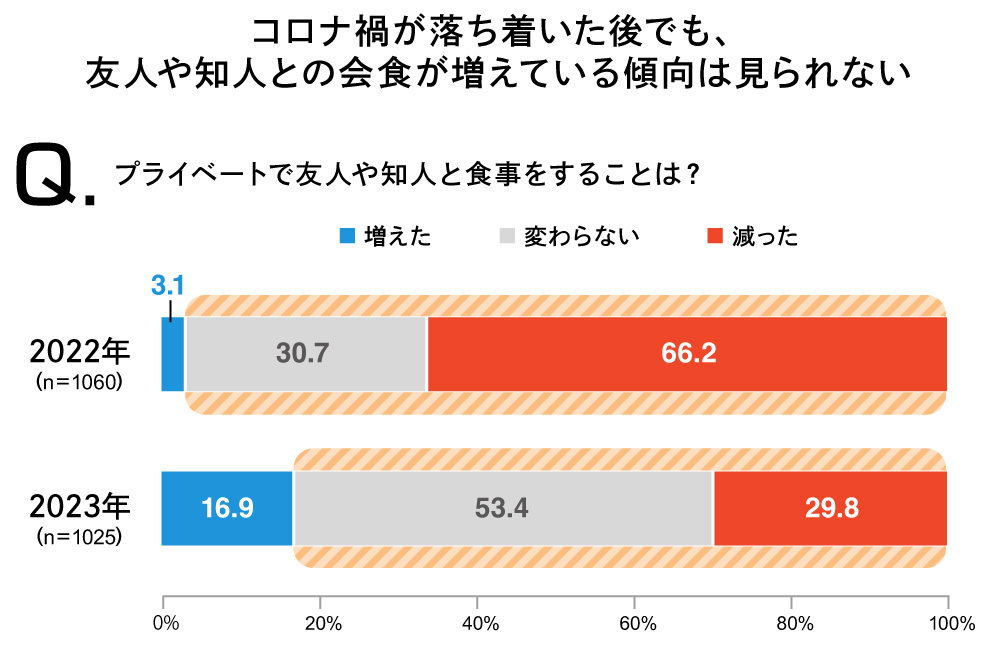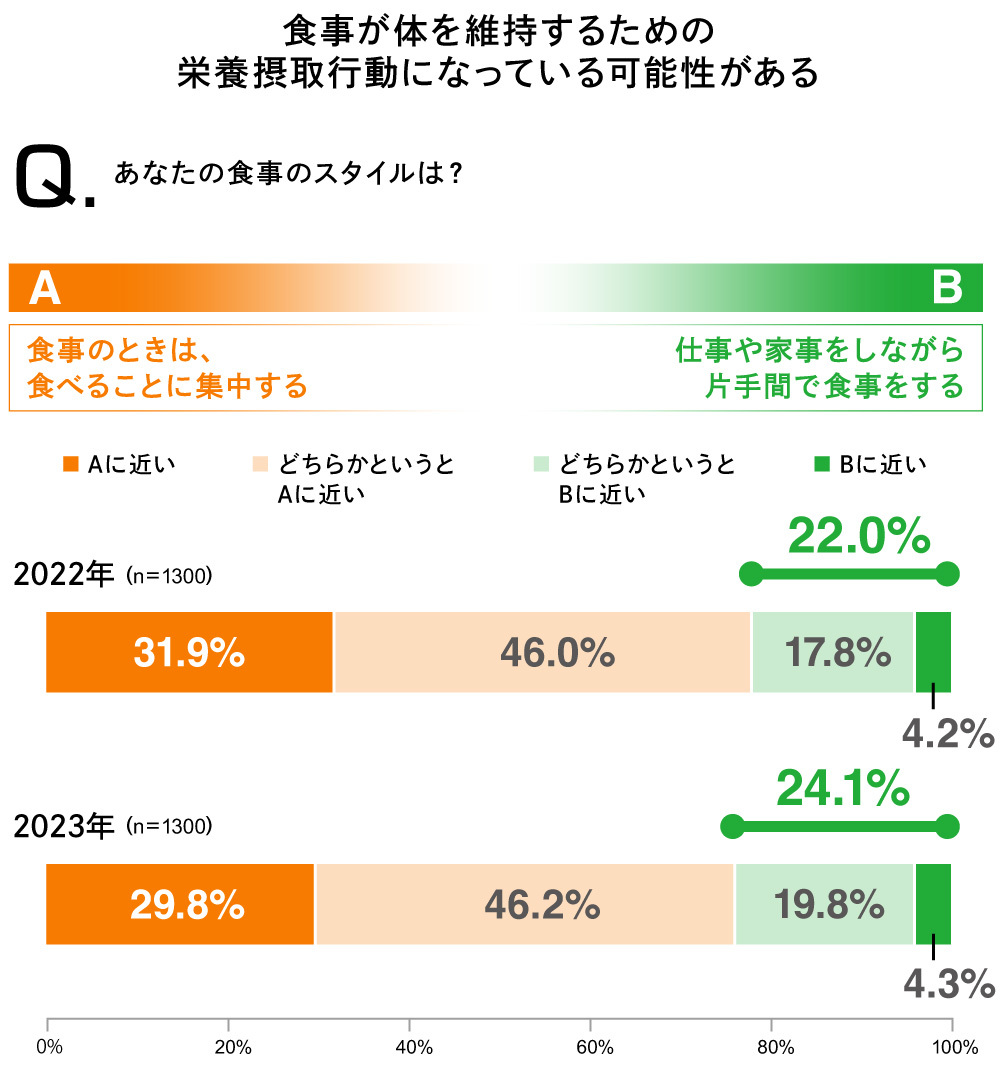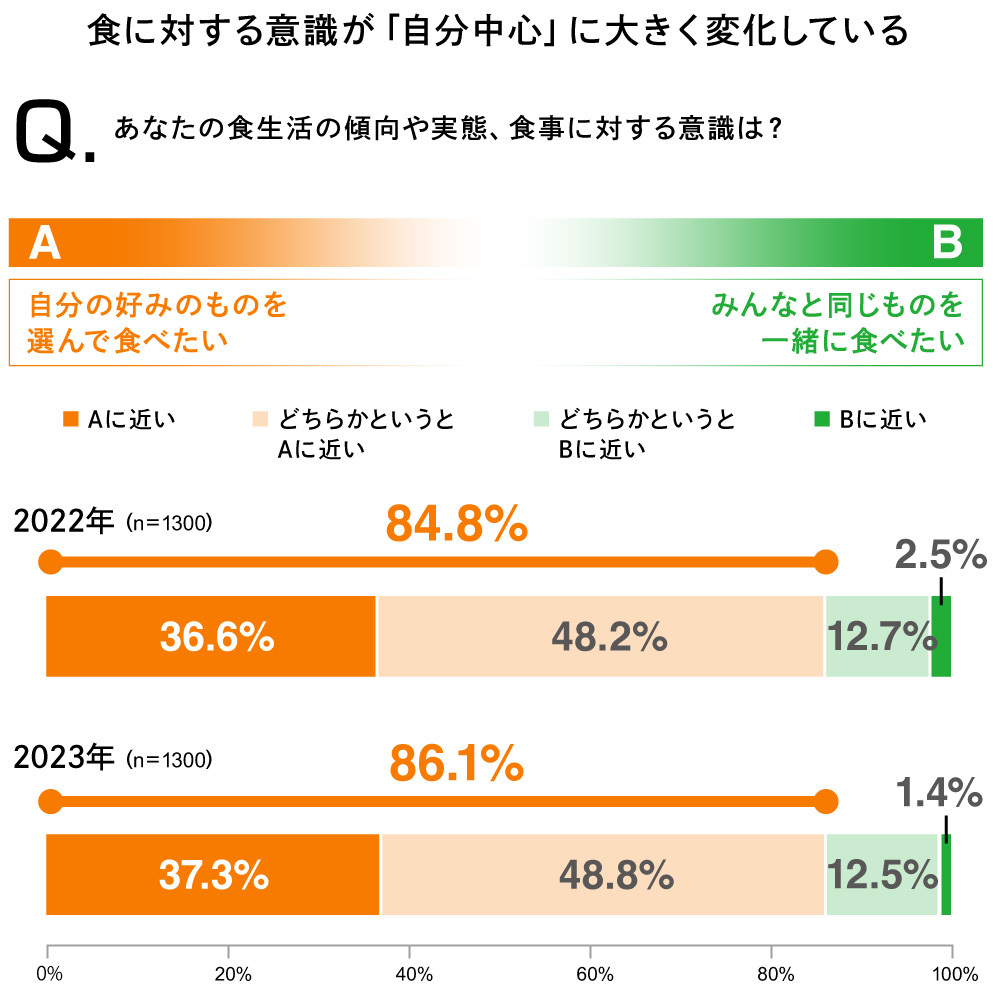Reflecting on my own life, I feel that after the pandemic, especially in my private life, the desire to "try that dish" or "visit that place" has taken precedence over "I want to see that person, so I'll create a dining opportunity." The priority of "who I go with" has decreased. On social media, I've also seen more posts from friends saying things like, "I want to go here, so if anyone wants to join, let me know!" This shift in attitudes toward food is clearly manifesting in real life as well.
However, it doesn't seem like food has ceased to function as a form of communication.
When asked, "Do you think food is one of the tools for communication?", the percentage of respondents who agreed was 24.5%, a slight increase of 0.1% compared to the 2022 survey, showing a flat trend. In contrast, the percentage of respondents who agreed with "Do you think cooking is one of the tools for communication?" increased from 11.9% in the 2022 survey to 14.2%.
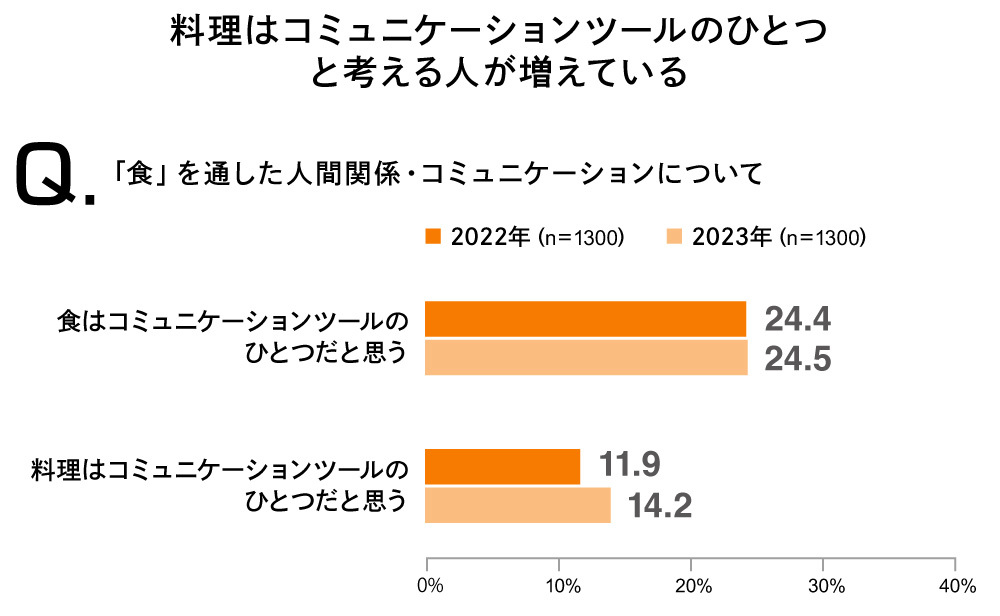
Consumer Survey on Eating Habits (Dentsu Inc. Food Lifestyle Lab)
Furthermore, 17.5% of respondents reported eating at home more often, significantly outnumbering the 3.8% who reported eating at home less. This suggests that the practice of "cooking and eating at home" is likely to remain largely established even after the pandemic.
Additionally, while from another company's survey, looking at responses to the question "Which dining occasion do you find most enjoyable?" revealed "Regular dinners" ranked highest, followed by "Drinking parties/home drinking" and "Family birthday celebrations." Notably, among men in their 40s, "Regular dinners" stood at 29.4%, significantly outpacing the next category. This result suggests they find happiness in spending time with family and in moments after work.
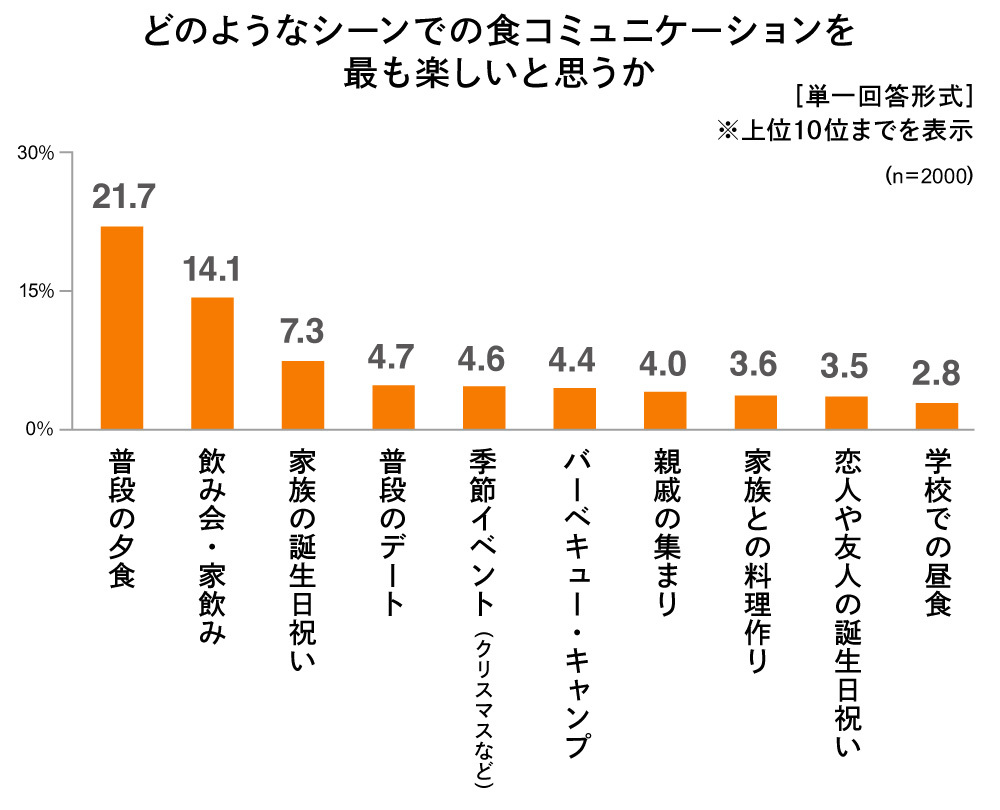
Ebara Foods Survey
These results suggest that food communication may become more familiar and naturally integrated into daily life, serving as a way to deepen bonds through the inevitable daily opportunity of eating.
Signs of a New Food Communication
Examples are emerging that hint at food communication becoming more accessible.
Multiple services and products have emerged that transform the daily act of eating into an experience—a tool for parent-child communication and even a learning opportunity.
For example, a new experiential digital content has been developed themed around "Food Education × Programming Thinking." It involves imagining what dish will be created by combining ingredients and cooking steps. This tool provides an opportunity for parents and children to cultivate programming thinking by planning efficient steps together while cooking.
Services combining "online content" and "real-world content" are also emerging. Participants enjoy online content like videos, quizzes, and mini-games, while ingredients related to the content are delivered to their homes, allowing them to physically interact with them.
In this way, food communication, following the pandemic, may be evolving into a tool that not only allows sharing deliciousness and enjoying time together through eating, but also connects to learning through food and provides new experiences never seen before.
New Food Communication Using "Cooking"
An example symbolizing the increase in responses like "I think cooking is one form of communication" is the "Silent Cooking Class." Participants collaborate to create a dish without speaking, communicating silently. This event is accessible regardless of hearing ability. Each participant receives an "incomplete recipe with different sections filled in," and they exchange their own information and missing details "without speaking" to complete the dish.
It's a new communication experiment designed to create opportunities for people to realize that "even without conversation, we can connect with each other."
As lifestyles diversify, the forms of food and communication continue to evolve, and new tools for unique experiences will surely emerge. I myself would like to create experiences that don't yet exist.
[Survey Overview]
Consumer Survey on Eating Habits 2022 (Dentsu Inc. Food Lifestyle Lab)
・Target Area: Nationwide
・Subject Criteria: Men and women aged 15 to 79
・Sample Size: 1,300
・Survey Method: Online survey
・Survey Period: September 29 - October 1, 2022
・Research Agency: Dentsu Macromill Insight, Inc.
Consumer Survey on Eating Habits 2023 (Dentsu Inc. Food Lifestyle Lab)
・Target Area: Nationwide
・Respondent Criteria: Men and women aged 15 to 79
・Sample Size: 1,300
・Survey Method: Online survey
・Survey Period: October 20–23, 2023
・Research Agency: Dentsu Macromill Insight, Inc.
*Percentage composition (%) is rounded to the second decimal place, so the total may not always add up to 100%.



